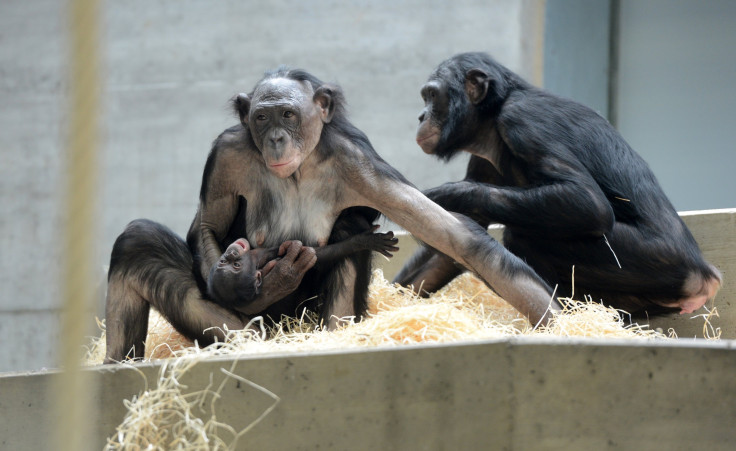Bonobos Use High-Pitched ‘Peep’ Calls To Communicate Like Human Babies

Wild bonobos, the closest living relatives of humans in the primate world, have a specific way of communication similar to that of human babies, researchers said in a new study Tuesday. To communicate, these apes use a high-pitched call, or “peep,” which requires context to be understood.
The “peep” calls, produced with a closed mouth across positive, negative and neutral circumstances, do not vary acoustically in different emotional contexts. It is this similarity in calls made in different situations that echoes the similarities found in human infant vocalizations, researchers said in the study, published in the journal PeerJ.
“When I studied the bonobos in their native setting in Congo, I was struck by how frequent their peeps were, and how many different contexts they produce them in,” Zanna Clay from the University of Birmingham’s School of Psychology, and the lead author of the study, said in a statement. “It became apparent that because we couldn’t always differentiate between peeps, we needed understand the context to get to the root of their communication.”

Although primate calls are essentially tied to certain contexts and emotional states, many human vocalizations are freed from this. According to researchers, human babies can produce a group of calls, called “protophones,” independently of their emotional state even before they learn languages.
According to the researchers, the type of communication observed in wild bonobos suggests a significant evolutionary transition from context-specific animal vocalizations to human vocalizations that might have occurred among bonobos about 6 million to 10 million years ago.
“We felt that it was premature to conclude that this ability is uniquely human, especially as no one had really looked for it in the great apes,” Clay said in the statement. “It appears that the more we look the more similarity we find between animals and humans.”
© Copyright IBTimes 2024. All rights reserved.






















